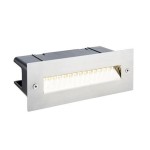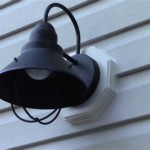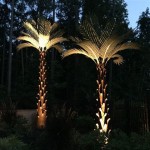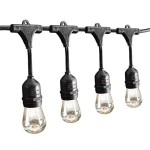Photoelectric Outdoor Lighting Control: Optimizing Efficiency and Safety
Photoelectric outdoor lighting control is a technology employed to automatically manage outdoor lighting systems based on the ambient light level. This is achieved through the use of a photoelectric sensor, often referred to as a photocell, which detects the presence or absence of daylight and signals the lighting system to switch on or off accordingly. This system provides a significant advantage over manual control, resulting in energy savings, enhanced safety and security, and reduced maintenance requirements.
The application of photoelectric control extends to a wide range of outdoor lighting scenarios, encompassing street lighting, parking lot illumination, building perimeter lighting, and landscape lighting. By ensuring that lights are only active during periods of darkness, photoelectric control minimizes unnecessary energy consumption, thereby contributing to environmental sustainability and reducing operational costs. The ability to automatically adjust the lighting output based on real-time conditions further optimizes energy use and extends the lifespan of lighting fixtures.
Understanding the components and operational principles of photoelectric outdoor lighting control is crucial for effective implementation and maintenance. The system typically comprises a photocell sensor, a control circuit or relay switch, and the lighting fixture itself. Each component plays a vital role in ensuring the reliable and efficient operation of the lighting system. Moreover, proper installation and calibration are essential to achieve the desired level of performance and avoid premature failure of the system.
How Photoelectric Sensors Work
The core of the photoelectric outdoor lighting control system is the photoelectric sensor, which is responsible for detecting ambient light levels. These sensors operate based on the photoelectric effect, a phenomenon where light striking a material causes the emission of electrons. The intensity of the emitted electrons is directly proportional to the intensity of the incident light. Two primary types of photoelectric sensors are commonly used in outdoor lighting control: photovoltaic cells and photoresistors.
Photovoltaic cells, also known as solar cells, generate a voltage when exposed to light. This voltage is then used to trigger a control circuit, which activates or deactivates the lighting system. Photovoltaic cells offer a relatively fast response time and are generally more efficient than photoresistors. However, they can be more expensive and more sensitive to variations in ambient temperature.
Photoresistors, also called light-dependent resistors (LDRs), change their resistance in response to changes in light intensity. In darkness, the resistance of a photoresistor is high, preventing current from flowing through the control circuit and keeping the lights off. When light strikes the photoresistor, its resistance decreases, allowing current to flow and activating the lighting system. Photoresistors are generally more affordable than photovoltaic cells and are less susceptible to temperature variations. However, their response time is slower, and their sensitivity to light intensity variations can be less precise.
Regardless of the type of sensor employed, the signal from the photocell is typically processed by a control circuit, commonly involving a relay switch. This switch acts as an intermediary, allowing the low-voltage signal from the photocell to control the high-voltage power supply to the lighting fixture. The control circuit may also incorporate features such as time delays or adjustable sensitivity settings. Time delays prevent the lighting system from cycling on and off due to temporary fluctuations in light levels, such as those caused by passing clouds or vehicle headlights. Adjustable sensitivity settings allow users to fine-tune the activation threshold of the lighting system, ensuring that it turns on at the desired level of darkness.
Benefits of Implementing Photoelectric Controls
The incorporation of photoelectric control into outdoor lighting systems provides numerous advantages across diverse application scenarios. These benefits span energy efficiency, cost savings, enhanced safety and security, reduced environmental impact, and minimized maintenance requirements.
Energy Efficiency: The most significant benefit of photoelectric control is its contribution to energy efficiency. By ensuring that lights are only active when they are truly needed, photoelectric control eliminates wasted energy resulting from unnecessary illumination during daylight hours. This becomes particularly relevant in areas with variable weather conditions or where manual control may not be consistently implemented. The energy savings achieved through photoelectric control directly translate into reduced electricity bills and a lower carbon footprint.
Cost Savings: The reduction in energy consumption attributable to photoelectric control leads to substantial cost savings over the lifespan of the lighting system. Lower electricity bills reduce operational expenses for businesses, municipalities, and residential properties. Furthermore, the extended lifespan of lighting fixtures resulting from reduced operating hours translates into fewer replacements and lower maintenance costs. The overall cost savings associated with photoelectric control make it a financially attractive investment for various stakeholders.
Enhanced Safety and Security: Properly implemented photoelectric outdoor lighting control contributes to enhanced safety and security in public and private spaces. By ensuring adequate illumination during periods of darkness, it reduces the risk of accidents, deters crime, and improves visibility for pedestrians and drivers. Well-lit environments promote a sense of security and well-being, making them safer and more pleasant for individuals to navigate. The automatic nature of photoelectric control guarantees consistent lighting levels, eliminating the risk of human error or oversight.
Reduced Environmental Impact: The reduction in energy consumption associated with photoelectric control has a positive impact on the environment. Lower electricity demand translates into reduced greenhouse gas emissions from power plants. By minimizing the environmental footprint of outdoor lighting systems, photoelectric control contributes to sustainability and helps mitigate the effects of climate change. The use of energy-efficient lighting technologies in conjunction with photoelectric control further amplifies these environmental benefits.
Minimized Maintenance Requirements: Photoelectric control systems, once installed and properly calibrated, generally require minimal maintenance. The automatic operation ensures that the lights are used only when necessary, extending the lifespan of the lighting fixtures and reducing the frequency of replacements. Regular inspections of the photocell sensor and control circuit are recommended to ensure proper functionality, but the overall maintenance burden is significantly lower compared to manually controlled systems.
Installation and Maintenance Considerations
The proper installation and maintenance of photoelectric outdoor lighting control systems are critical for ensuring optimal performance and longevity. Selecting the right components, determining suitable placement, and establishing a regular maintenance schedule are essential for maximizing the benefits of this technology.
Component Selection: Selecting the appropriate photocell sensor and control circuit is crucial for the success of the lighting control system. Factors to consider include the type of sensor (photovoltaic or photoresistor), sensitivity to light levels, response time, operating voltage, and environmental conditions. The control circuit should be compatible with the sensor and the lighting fixture, providing reliable switching and adjustable sensitivity settings. Choosing high-quality components from reputable manufacturers ensures long-term durability and performance.
Sensor Placement: The placement of the photocell sensor is crucial. It must be located in a position where it is exposed to natural daylight but shielded from artificial light sources, such as streetlights or building lights. Direct sunlight can damage the sensor and cause premature failure. The sensor should also be positioned away from overhanging trees or other obstructions that could cast shadows and interfere with its operation. The ideal placement involves ensuring the sensor receives a representative sample of ambient light conditions without being influenced by extraneous light sources or obstructions.
Calibration and Adjustment: After installation, the photoelectric control system should be properly calibrated and adjusted to ensure that the lights turn on and off at the desired light levels. This involves adjusting the sensitivity settings on the control circuit to fine-tune the activation threshold. Regular monitoring of the system’s performance is recommended to ensure that it continues to operate correctly over time. Seasonal adjustments may be necessary to account for changes in daylight hours and weather conditions. Some advanced systems offer automatic calibration features that simplify the adjustment process.
Regular Maintenance: While photoelectric control systems require minimal maintenance, periodic inspections are recommended to ensure proper functionality. Check the photocell sensor for dirt, debris, or damage. Clean the sensor regularly to ensure accurate light detection. Inspect the control circuit for any signs of corrosion or damage. Replace any faulty components promptly to prevent system failure. A proactive maintenance schedule helps ensure the continued reliability and efficiency of the lighting control system.
Troubleshooting: Common issues with photoelectric control systems include lights failing to turn on, lights failing to turn off, or lights flickering. These problems can often be traced to a faulty photocell sensor, a defective control circuit, or wiring issues. Testing the components with a multimeter can help identify the source of the problem. Consulting a qualified electrician is recommended for complex troubleshooting or repairs. Following the manufacturer’s troubleshooting guidelines can also assist in resolving common issues.
In conclusion, photoelectric outdoor lighting control offers a practical and effective approach to optimizing outdoor lighting systems. By automatically adjusting lighting output based on ambient light levels, it delivers significant energy savings, reduces operational costs, enhances safety and security, and minimizes environmental impact. Careful consideration of component selection, installation practices, and maintenance procedures is crucial for realizing the full potential of this technology.

Light Control Switch Eye Dusk To Dawn Photoelectric For Home Indoor Outdoor Street Com

Photocell Outdoor Lighting Control 866 637 1530

Have A Question About Woods 1800 Watt Swivel Mount Light Control With Photocell Pg 2 The Home Depot

120v Ac Photoelectric Switch Photocell Light Dusk To Dawn Sensor For Outdoor Lighting Hardwired Post Eye Control Fruugo Fi

Bn Link Outdoor 24 Hour Water Resistant Photoelectric Countdown Timer Photocell Light Sensor 2 4 6 Or 8 Hours Mode 3 Grounded S Remote Control 100 Ft Range For Home And Garden Com

Photoelectric Outdoor Lighting Control China Auto On Off Photocell Street Light Switch Made In Com

Fisher Pierce Photoelectric Outdoor Lighting Control 6690b Nib

105 305v Photocell Day Light Sensor For Street China On Off Switch Made In Com

Low Voltage Photoelectric Control Time Switches

Tebru Light Sensor Control Automatic On Off Photoelectric Switch For Outdoor Lighting Fixtures Com
Related Posts







